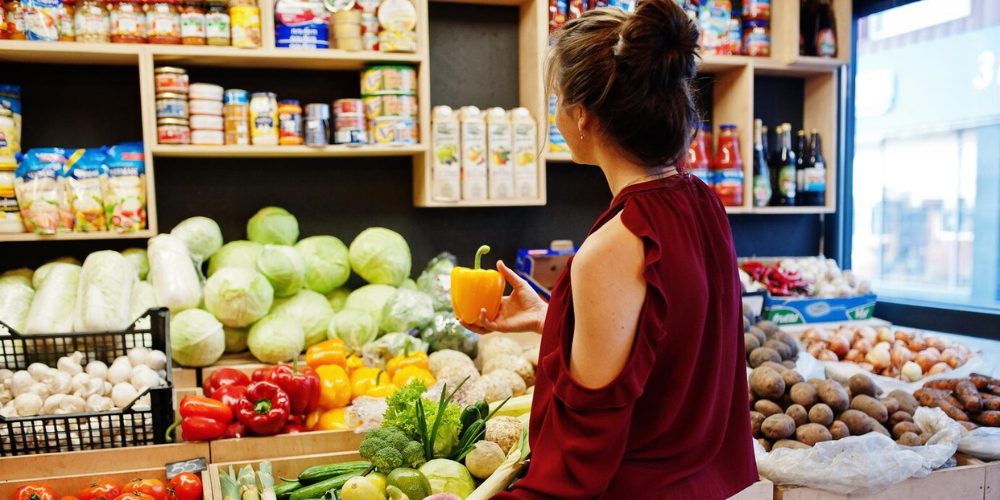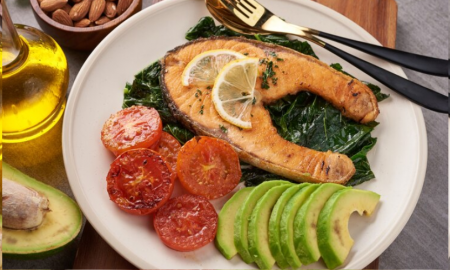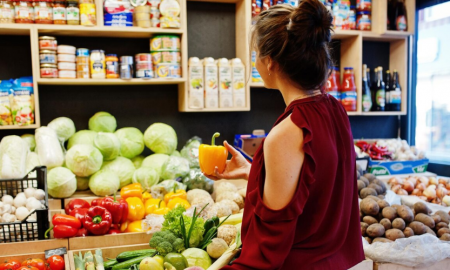
Grocery Prices May Climb as New Tariffs Hit Imported Food

Rising food prices are nothing new, but recent tariff plans could make everyday grocery staples even more expensive. A new round of tariffs announced by former President Trump could directly impact products like coffee, shrimp, chocolate, and imported fruits—items many Americans buy regularly but may not realize aren’t produced domestically.
This shift goes against earlier campaign promises to reduce grocery bills. Instead, experts say these tariffs could drive prices higher, especially on foods heavily reliant on imports.
What’s Driving the Price Hikes?
The new tariffs come as part of a broader effort to reshape trade policies and prioritize U.S. manufacturing and agriculture. While that goal sounds straightforward, the reality is more complex—especially when it comes to food.
Here’s what’s happening:
– The administration announced baseline and reciprocal tariffs targeting imported goods.
– Many of the items affected are ones the U.S. doesn’t grow or produce in large quantities.
– These changes could raise overall food prices by nearly 3%, and fresh produce by around 4%, based on a model by the Yale Budget Lab.
Coffee Could Cost More—and Americans Will Feel It

Freepik | jigsawstocker | With tariffs now focused on large-scale coffee exporters, your morning coffee is likely to become more costly.
Coffee is a daily habit for many people. According to the National Coffee Association, 63% of American adults drink coffee every day. However, the U.S. grows just 1% of its own beans—mainly in Hawaii and Puerto Rico. The remaining 99% comes from other countries.
That means even a small tariff can push prices up fast. With tariffs now aimed at major coffee exporters, there’s a strong chance your morning cup could start costing more.
And unlike eggs or milk, coffee tends to be a staple people are willing to splurge on. Just look at how quickly shelves cleared when egg prices jumped—yet only 10% of Americans eat eggs daily. Coffee hits harder, simply because it’s more ingrained in people’s routines.
Shrimp Is Another Big Target
Seafood lovers could also be in for a surprise. Shrimp is one of the most popular types of seafood in the U.S., but more than 94% of the shrimp consumed here is imported, according to the International Trade Commission.
Until now, imported shrimp entered the country duty-free. That helped keep prices down. But the new tariffs will apply rates like:
– 10% on shrimp from Ecuador
– 26% on shrimp from India
– 32% on shrimp from Indonesia
– 46% on shrimp from Vietnam
Together, those four countries supply over 90% of all imported shrimp sold in the U.S.
Ed Gresser, trade director at the Progressive Policy Institute, summed it up by saying the seafood category “is likely to take a significant hit.”
On the flip side, U.S. shrimp producers have welcomed the move. John Williams, executive director of the Southern Shrimp Alliance, stated that the tariffs are a win for American seafood jobs, food safety, and responsible production.
Chocolate May Get Smaller—And Pricier
Chocolate lovers may have already noticed changes in their favorite sweets. The USDA has reported a drop in U.S. cocoa imports, as prices continue to rise. At the same time, some manufacturers are shrinking the size of their products without lowering the price—a tactic often called “shrinkflation.”
Most cocoa beans are sourced from abroad, especially from West Africa and Latin America. When costs increase at the source, it affects everything—from candy bars to hot chocolate mixes.
This is one of those cases where the increase isn’t just visible at checkout. It’s in the size of what you’re getting, too.
What About Beef?
Although the U.S. imports only about 12% of its beef, the meat that does come in plays a key role in the fast-food industry.
Australian beef, in particular, is blended with fattier U.S. beef to create the ideal fat-to-lean ratio for burgers. A 10% tariff on beef from Australia could mean higher costs for fast-food giants and possibly for consumers.
In fact, Australian trade officials have already confirmed that these added costs will be passed on to U.S. buyers. Even McDonald’s could feel the pressure—though the company hasn’t commented yet.
Are All Countries Affected?

Instagram | barrons | Exempt from the new 10% baseline tariff, Canada and Mexico still face other existing tariffs.
Not entirely. Canada and Mexico were left out of the new 10% baseline tariff, although other existing tariffs still apply.
This is significant because both countries play a major role in supplying the U.S. with essential grocery items. Mexico is a key source of winter fruits and vegetables, such as avocados, while Canada provides chocolate and a range of packaged goods.
Under the USMCA trade agreement, certain imports from these nations continue to benefit from tariff exemptions, helping to keep grocery store shelves stocked and prices somewhat stable for consumers.
Grocery Prices and Politics
Groceries are one of the few places where nearly every American feels inflation directly. That’s why changes to food pricing carry so much political weight.
During a recent discussion, Trump acknowledged the situation by saying:
“Groceries went through the roof. And I campaigned on that.”
He referred to the term “groceries” as a symbol of household budgets being stretched thin. And it’s true—any increase at the supermarket, no matter how small, can quickly add up.
Coffee Beans Last a While—But Not Forever
There’s a small silver lining: coffee beans have a longer shelf life than fresh produce. If prices do climb significantly, some shoppers may consider stocking up. But that only works for so long.
In the end, these tariffs may have ripple effects far beyond trade debates or political speeches. They could change what’s affordable, what’s available, and what people choose to buy on their weekly grocery run.
The impact of Trump’s tariff decisions will be felt across dinner tables and coffee counters nationwide. And for a country that runs on caffeine and quick meals, that’s not a small shift.
More in Food
-
`
Simple Steps to Make the Philadelphia Cheesecake Recipe
If you’re looking to make a dessert that never fails to impress, this Philadelphia cheesecake recipe is your go-to. With its...
August 21, 2024 -
`
How Much Does It Cost to Travel in Europe?
Dreaming of strolling along the Seine in Paris, exploring ancient ruins in Rome, or sipping sangria on a Spanish beach? Europe’s...
August 13, 2024 -
`
Mahershala Ali and Amatus-Sami Karim’s Decade-Long Marriage
Who is Mahershala Ali married to? This question often arises when discussing the acclaimed actor. Mahershala Ali, the talented and versatile...
August 5, 2024 -
`
Is It Normal to Be Sore After a Massage? 9 Ways to Relieve Soreness
Is it normal to be sore after a massage? Many people schedule a massage to drift into a state of relaxation...
August 3, 2024 -
`
Delicious Pescatarian Breakfast Ideas
Exploring new breakfast ideas can be a delightful way to start your day, especially when they align with a pescatarian diet....
July 24, 2024 -
`
Is Phuket Worth Visiting in 2024?
Phuket, Thailand’s gem of an island, has long attracted travelers with its pristine beaches, lively nightlife, and cultural treasures. The question...
July 19, 2024 -
`
What is the Best Way to Melt Chocolate for Any Recipe?
Chocolate is a beloved ingredient in many desserts, from ganache and cake batters to decadent drizzles over ice cream. Knowing what...
July 12, 2024 -
`
How to Plan a Backpacking Trip Like a Pro in 16 Steps
Planning a backpacking trip can be as thrilling as it is daunting, especially if you’re keen to make every moment count....
July 5, 2024 -
`
How to Build Fast-Twitch Muscles in 5 Simple Steps
Have you ever wondered how to build fast-twitch muscles? These powerful muscle fibers are key to explosive strength and speed. Whether...
June 20, 2024















You must be logged in to post a comment Login